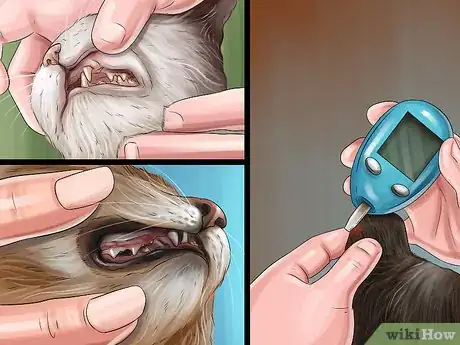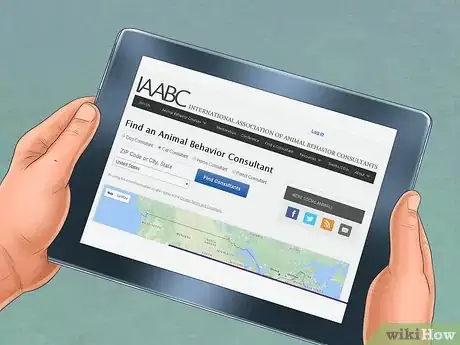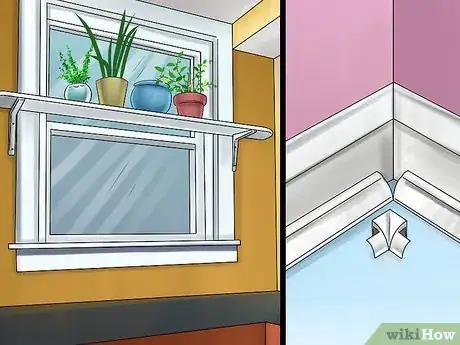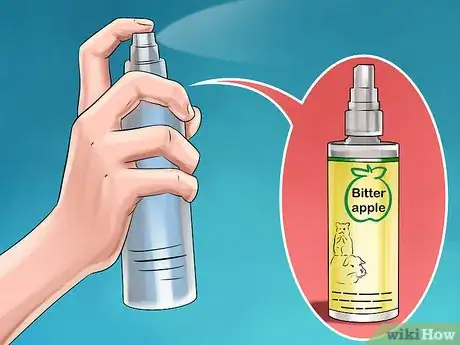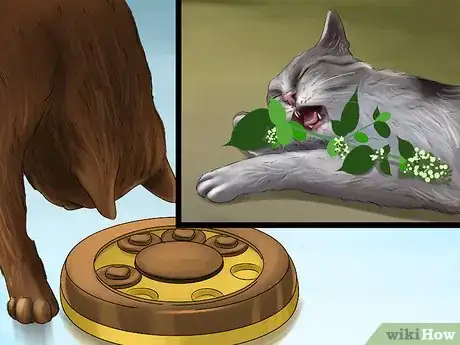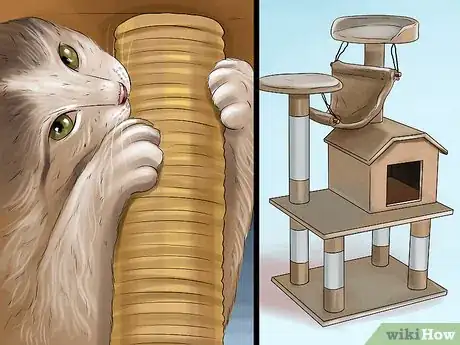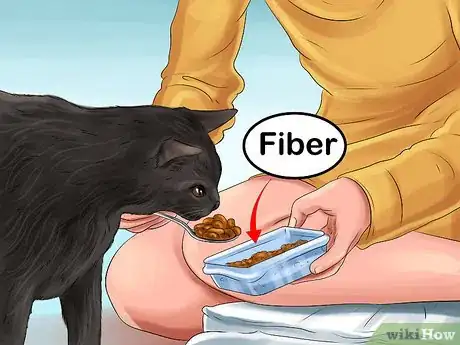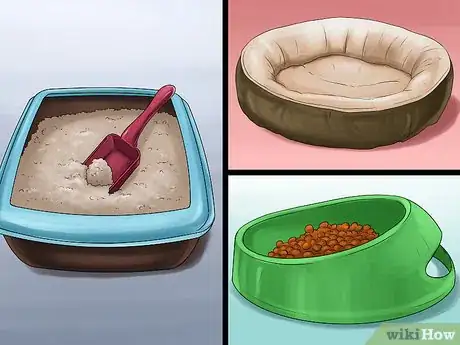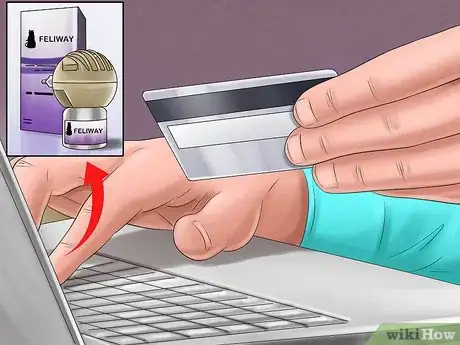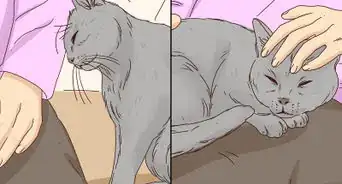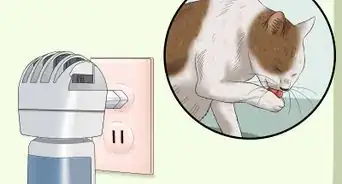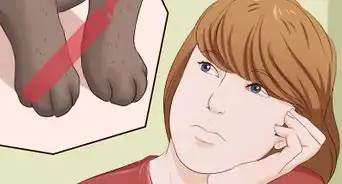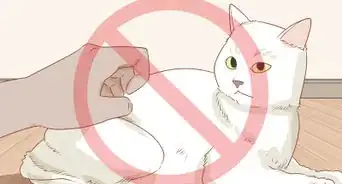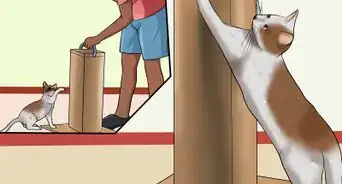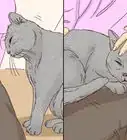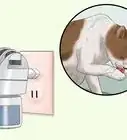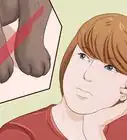This article was co-authored by Lauren Baker, DVM, PhD. Dr. Lauren Baker is a Veterinarian and Assistant Scientist at the University of Wisconsin-Madison. With over 10 years in veterinary medicine, she specializes in the concept of “one health,” which uses insights from veterinary medicine to help human medical research. She holds a Ph.D. in Comparative Biomedical Sciences, a Doctor of Veterinary Medicine, an MS in Comparative Biomedical Sciences, and a Bachelor’s degree in Psychology from the University of Wisconsin-Madison.
There are 8 references cited in this article, which can be found at the bottom of the page.
This article has been viewed 27,458 times.
Feline pica refers to long-term, compulsive chewing and eating of non-food items such as plants, power cords, and fabric. To deal with this condition, consult your veterinarian, hire an animal behavior consultant, and have the number for a 24/7 poison control phone line ready. Reduce your cat’s access to targeted non-food items, offer alternative things to chew and eat, and keep your cat busy. Reduce stress as much as possible for your cat as it may be a contributing factor to its feline pica.[1]
Steps
Consulting Experts
-
1Get help from your veterinarian. If your cat is compulsively chewing and eating non-food items, consult your veterinarian. Your vet may recommend anti-anxiety medication as a start to curbing your cat's behaviour. They may also test for other medical explanations for your cat's symptoms, including:[2]
- Anemia
- Dental disease
- Feline leukemia
- Diabetes
- Brain tumors
-
2Hire an animal behaviour consultant. If your cat's pica is not explained by a specific medical condition, seek professional help to deal with it as a behavioural problem. An animal behaviourist can assess your cat's problem and manage, modify, and prevent the problem behaviour from repeating itself. To find a certified animal behaviour consultant near you, visit the International Association of Animal Behaviour Consultants' website.[3]Advertisement
-
3Keep poison control on speed dial. In the event that your cat ingests a toxic substance as a result of its feline pica, have an animal poison control phone line on your speed dial. The ASPCA Animal Poison Control Center has a 24/7 emergency line for immediate consultations.
Treating Feline Pica
-
1Move target items out of your cat’s reach. The first way to deal with your cat’s feline pica is to cut off its access to the items it chews or eats the most. Move plants to high shelves, hide wires and cords (e.g. with plastic tubing), and keep laundry tucked away in drawers or closets. If your cat has a habit of chewing bedclothes, keep it locked out of any bedrooms.[4]
-
2Dissuade your cat with a bad-tasting spray. To keep your cat from chewing or eating certain items, spray those items with a bitter taste deterrent spray for pets. These non-toxic sprays have an unpleasant flavour that will make once-coveted non-food items unappealing to your cat. Purchase a bitter spray online or at a pet store.[5]
-
3Offer safe alternatives to chew. If your cat has a compulsion to chew, offer it suitable alternatives like durable chew toys, rawhide bones, or dental sticks. If your cat compulsively eats plants, give it cat-friendly alternatives to your houseplants like a pot of grass or catnip, available at pet stores. Treat-filled puzzle toys will occupy your cat for hours and provide the chewing fix it needs.[6]
-
4Keep your cat busy. If you suspect that boredom may be causing your cat’s pica, trying enriching its environment and giving it things to do. Get scratching posts, puzzle toys, cat trees, and interactive games to keep your cat stimulated and busy. Try to engage your cat in at least 15-20 minutes of play each day, such as chasing or hunting games.[7]
-
5Feed your cat more fiber. Ask your veterinarian if increasing your cat’s fiber intake would be a suitable way to curb its feline pica. Your cat’s pica may be due to it not feeling satisfied after eating its current diet, particularly if it is being fed high-carbohydrate dry cat food. High fiber, low-calorie food will allow your cat to consume more without increasing its calorie intake, and leave it feeling full for longer. [8]
- Be sure to consult with your vet before altering your cat’s diet, as a large increase in fiber may cause digestive distress.
-
6Avoid change to your cat’s environment. Stress can be a key factor in incidences of feline pica, so minimize stress as much as possible for your cat by avoiding change to its environment. Keep your pet’s litter box, food bowl, bed, and favorite toys in the same spot, and keep a solid routine for mealtimes. If a life event makes change a necessity (e.g. moving to a new home), keep things as familiar as possible for your cat by providing it with familiar items and introducing change slowly.[9]
- For example, if you move to a new house, set up all of your cat’s things (e.g. cat bed, litter box, toys) in a small room and let it get settled before introducing it to the rest of its new home.
-
7Buy a synthetic pheromone spray. Synthetic pheromone sprays mimic a cheek pheromone that cats release when bonding with each other or their owners, creating a calming effect. Ask your vet if this kind of spray would be an effective tool for dealing with your cat’s pica. For example, brands like Feliway, a synthetic pheromone available in spray or room diffuser form, are available through veterinary clinics or online.[10]
References
- ↑ https://icatcare.org/advice/problem-behaviour/pica-cats
- ↑ http://www.cathealth.com/how-and-why/pica-in-cats-why-cats-eat-strange-things
- ↑ http://iaabc.org/about/faq
- ↑ http://messybeast.com/pica.htm
- ↑ http://www.cathealth.com/how-and-why/how-to-keep-your-cat-from-chewing-on-houseplants
- ↑ http://messybeast.com/pica.htm
- ↑ http://messybeast.com/pica.htm
- ↑ http://messybeast.com/pica.htm
- ↑ http://www.catbehaviorassociates.com/stress-in-cats/
About This Article
To deal with feline pica, move any target items like plants or wires out of your cat’s reach so it won’t be able to chew them. Alternatively, if you can’t move the items, try spraying them with a bitter taste deterrent spray since your cat will be less likely to chew them. If you suspect your cat is chewing because it’s bored, try to distract it with a scratching post or play with it for at least 15 minutes a day. Finally, you should consult your vet since they can test for other medical conditions and prescribe medication if necessary. For more advice from our Veterinarian co-author, including how to encourage your cat to chew safe alternatives, keep reading!
